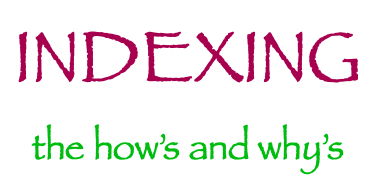
As an index editor of manuscripts, I create your index — a source of information that helps readers find specific names or subjects in your text. Instead of constantly flipping through your book to find these names and subjects, the reader can refer to the index and easily access and re-read a term, phrase, or passage.
Some may question if indexes are archaic in the age of electronic devices and ebooks. The answer is a resounding NO — especially when dealing with an information-dense nonfiction book. An index can save readers hours of work.
The index is alphabetized and lists page numbers associated with each word and/or topic. It appears in the back matter of your book. Some refer to it as a roadmap or blueprint of the book itself, mostly in non-fiction works and sometimes (although rarely) in complex fiction as well. Authors and readers alike claim an index brings order to chaos, and I find this to be true as well.
Specialization and Curating as an Index Editor
Back-of-the-book indexing from a software perspective isn’t necessarily difficult, but the art of decision-making is certainly complex. The quote below gives you an idea of the complexity:
The chief purpose of an index is distillation, and in performing that task it can manage to suggest a life’s incongruities with a concision that the most powerful biographical stylist will have trouble matching.
—Thomas Mallon, New York Times, 10 March 1991
Some may assume that indexes can be compiled and formatted by computer software programs, which is addressed on the American Society for Indexing website. While it’s true that computers can construct a concordance (a list of words and phrases somewhat like a glossary), an actual human being is needed to manipulate wording and organize ideas.
There are conventions to follow as well, described, for instance, in the Chicago Manual of Style. First, indexers generally work ONLY in completed manuscripts or from page proofs. Indexed content is alphabetized and neatly arranged in columns. Professional indexers are faced with decisions about run-in formatting vs. indented formatting; sorting by alphabetical letters vs. word-by-word; abbreviation of page ranges; inclusion of graphics, images, and tables; cross-references; and much more. The goal is to create a comprehensive index that is easily navigable, even when the the subject matter is complicated.
Do It Yourself — YouTube
Many authors hire indexers because the work is labor-intensive, involves minutiae, and causes brutal eye strain. In short, it’s easy to get lost in the weeds! However, some authors are interested in creating the index themselves. If so, I encourage them to check out resources on YouTube. The video below (with more than 74,000 views) is one of many helpful resources on the internet.

Contact me today and let’s get started!
If I’m booked with indexing assignments, I can refer you to other professional indexers.
